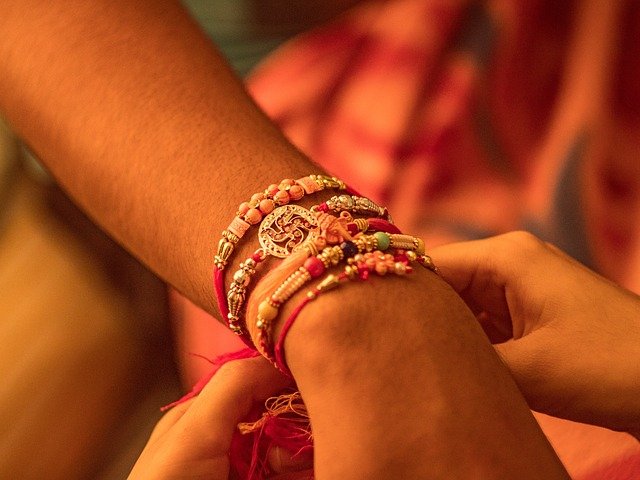ugadi

All you need to know about Ugadi and Gudi Padwa
Ugadi and Gudi Padwa are the first day of the month in the Lunar Calendar known as the month of Chaitra. For people in above the Vindhyas, this day marks as the beginning of Navratri. But, in the South, including Maharashtra, the day is known as Gudi Padwa as well as Ugadi.
It is a beautiful festival having both cultural and religious significance. One of the interesting facts about the regions are, how differently each state celebrates the day with traditional food and rituals.
Here are some interesting facts associated with Ugadi and Gudi Padwa that you probably did not know:
1. The festival is called Ugadi in states of Telangana, Andhra Pradesh, and Karnataka,
2. In Maharashtra, people call the festival Gudi Padwa. The Marvadi community call the day Thapna.
3. This day is predominantly celebrated by the people who live in areas that fall between the Kaveri and Vindhya rivers.
4. The Hindu community in Indonesia celebrate the same day but as Nyepi.
5. The word ‘Ugadi’ comes from the original, ‘Yugadi’. It consists of two Sanskrit words- Yug meaning era and Adi meaning beginning).
6. In lots of villages and states the preparations begin days before New Year day. It is traditional as well as auspicious to clean homes and buy new clothes for this festival
7. In many households in Maharashtra, the festivity starts with the making of a traditional sweet dish of Shrikhand and Puran Poli.
8. On Ugadi or Gudi Padwa, everyone rises early and takes a traditional oil bath and puts on new clothes to signify a brand-new beginning. All the idols of gods and goddesses are also given an oil-bath on this day.
9. An incredibly special tradition is the making of Ugadi Pacchhadi. While every home has their own special recipe, this dish is made of neem flowers and leaves, jaggery, grated raw mango and salt. Each spoon of the Pacchhadi has the flavor bitter, sour and sweet and symbolising the different experiences and emotions of life.
10. According to Hindu scriptures, this is the day Lord brahma started creating the world.
11. Homes, temples, and community centres are decorated with rangoli, flowers and torans made of mango leaves and most importantly, neem.
12. In rural parts of Maharashtra, there is a ritual of making a gudi (doll) om this day. The doll is made with a bamboo stick, neem and mango leaves, red garland, with an inverted copper or silver pot for a face. After the rituals are done, the doll is placed outside the main door, for others to see.
13. On the day of Gudi Padwa, people in the Konkan region of the country prepare a regional speciaity called Kanangachi Kheer. Other dishes made of boiled sweet potato, coconut milk, rice flour and jaggery are also included.
14. Astronomically, on this day the tilt of the earth is such that we receive the maximum amount of sunlight for a period of 21 days that which starts on the Ugadi day. This is good for crops and harvest and signifies the period when the earth starts to recharge itself for a new beginning with the help of Sun’s energy.
15. An important aspect of Ugadi and Gudi Padwa is the Panchanga Shravanam, the astrological forecast for the year. It is read by the priests at the temples or by the eldest member of the family at home.
Ugadi and Gudi Padwa are celebrated fervently to welcome a new start in life every year. It is a time to reset and hope the new year will brings happiness, well-being, growth, and prosperity.
उगादि और गुड़ी पड़वा के बारे में वो सब जो आप जानना चाहते हैं
उगादि और गुड़ी पड़वा चंद्र कैलेंडर में महीने के पहले दिन होते हैं जिसे चैत्र के महीने के रूप में जाना जाता है। विंध्य से ऊपर के लोगों के लिए, यह दिन नवरात्रि की शुरुआत के रूप में मनाया जाता है। लेकिन महाराष्ट्र सहित दक्षिण में, इस दिन को गुड़ी पड़वा और उगादि के रूप में जाना जाता है।
यह एक खूबसूरत त्योहार है जिसका सांस्कृतिक और धार्मिक दोनों महत्व है। दिलचस्प तथ्यों में से एक क्षेत्रों के बारे में है कि प्रत्येक राज्य पारंपरिक भोजन और अनुष्ठानों के साथ इस दिन को कितने अलग तरीके से मनाते हैं।
यहाँ उगादि और गुड़ी पड़वा से जुड़े कुछ रोचक तथ्य हैं जो शायद आप नहीं जानते होंगे:
1. तेलंगाना, आंध्र प्रदेश और कर्नाटक राज्यों में इस त्योहार को उगादि कहा जाता है।
2. महाराष्ट्र में लोग इसे गुड़ी पड़वा कहते हैं। मारवाड़ी समुदाय इस दिन थापना बुलाता है।
3. यह दिन मुख्य रूप से उन लोगों द्वारा मनाया जाता है जो कावेरी और विंध्य नदियों के बीच आने वाले क्षेत्रों में रहते हैं।
4. इंडोनेशिया में हिंदू समुदाय इसी दिन को न्येपी के रूप में मनाते हैं।
5. उगादि शब्द मूल, 'युगादि’ से आया है। इसमें संस्कृत के दो शब्द हैं- युग और आदि अर्थात शुरुआत।
6. कई गांवों और राज्यों में नए साल के दिन से कुछ दिन पहले तैयारी शुरू हो जाती है। घरों को साफ करना और इस त्योहार के लिए नए कपड़े खरीदना शुभ माना जाता है।
7. महाराष्ट्र के कई घरों में उत्सव की शुरुआत पारंपरिक तरीके से होती है श्रीखंड और पूरन पोली की मिठाई बना के।
8. उगादि या गुड़ी पड़वा पर, हर कोई जल्दी उठता है और पारंपरिक तेल स्नान करता है और नए कपड़े पहनता है, ये सब एक नई शुरुआत के प्रतीक हैं। देवी-देवताओं की सभी मूर्तियों को भी इस दिन तेल स्नान कराया जाता है।
9. उगादि पच्चड़ी बनाना एक विशेष परंपरा है। हालांकि हर घर में उनकी
खुद की खास रेसिपी होती है, यह व्यंजन नीम के फूल और पत्तियों, गुड़, कद्दूकस किए हुए कच्चे आम और नमक से बनती है। पचड़ी के प्रत्येक चम्मच का स्वाद कड़वा, खट्टा और मीठा होता है, यह जीवन के विभिन्न अनुभव और भावनाओं का प्रतीक है।
10. हिंदू शास्त्रों के अनुसार, इसी दिन भगवान ब्रह्मा ने सृष्टि की रचना शुरू की थी।
11. घरों, मंदिरों और सामुदायिक केंद्रों को रंगोली, फूलों से और आम और सबसे महत्वपूर्ण नीम के पत्तों से बने तोरणों से सजाया जाता है ।
12. महाराष्ट्र के ग्रामीण इलाकों में इस दिन गुड़ी (गुड़िया) बनाने की रस्म होती है।
गुड़िया को बांस की डंडी, नीम और आम के पत्ते, लाल माला, और चेहरे के लिए तांबे या चांदी के उल्टे बर्तन से बनाया जाता है। पूजा-अर्चना के बाद गुड़िया को दूसरों को देखने के लिए मुख्य द्वार के बाहर रख दिया जाता है।
13. इस गुड़ी पड़वा पर देश के कोंकणी क्षेत्र के लोग एक क्षेत्रीय विशिष्टता तैयार करते हैं जिसे कनांगछी खीर कहा जाता है। उबले शकरकंद, नारियल का दूध, चावल के आटे और गुड़ से बने अन्य व्यंजन भी शामिल होते हैं।
14. खगोलीय दृष्टि से इस दिन पृथ्वी का झुकाव ऐसा होता है कि हमें 21 दिनों की अवधि के लिए अधिकतम सूर्य प्रकाश प्राप्त होता है, जो कि उगादि के दिन शुरू होता है। यह फसलों के लिए अच्छा है और उस अवधि को दर्शाता है जब पृथ्वी एक नई शुरुआत के लिए सूर्य की ऊर्जा की मदद से खुद को रिचार्ज करना शुरू कर देती है।
15. उगादि और गुड़ी पड़वा का एक महत्वपूर्ण पहलू पंचांग , यानि ज्योतिषीय
वर्ष के लिए पूर्वानुमान, है। इसे मंदिरों के पुजारी या घर पर परिवार के सबसे बड़े सदस्य द्वारा पढ़ा जाता है।
उगादि और गुड़ी पड़वा हर साल जीवन में एक नई शुरुआत का स्वागत करने के लिए जोश के साथ मनाया जाता है। यह रीसेट करने का समय है और आशा है कि नया साल खुशी, कल्याण, विकास और समृद्धि लाएगा।










